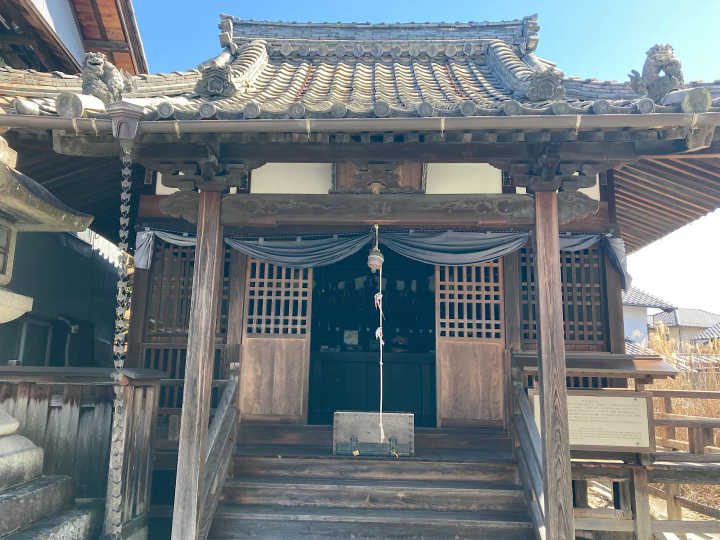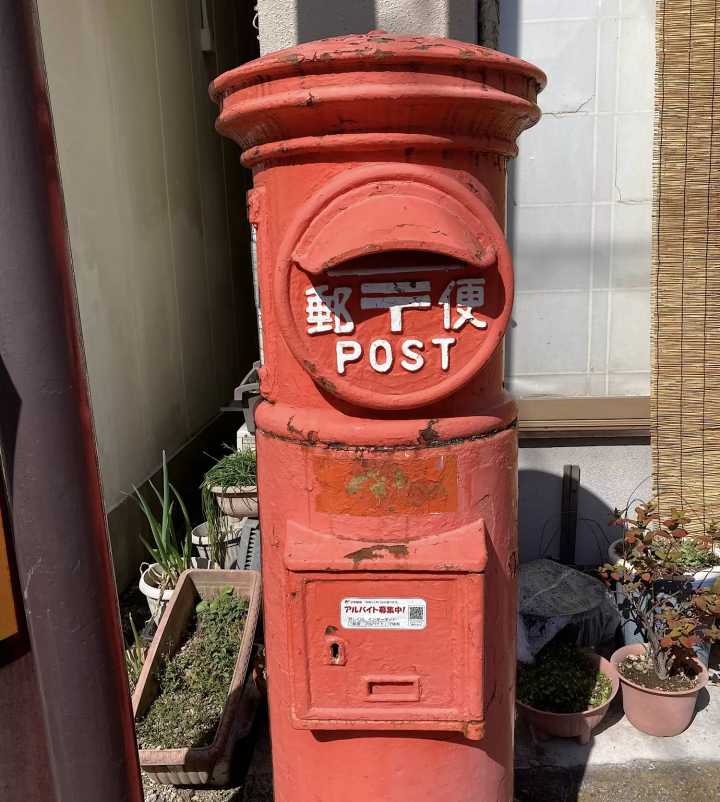Nakasendo Trail ~ Ena Station Area

In the past two articles, I have introduced the 7km stretch of Nakasendo that starts from Takenami Station on the JR Chuo Line and ends at Ena Station. After passing through the traditional mountain path and entering the city, we will introduce the highlights of Nakasendo around Ena Station.
View of Mt. Ena from the Sakanoue intersection
If you walk along Nakasendo from Saigyo Suzurimizu Park, which I introduced in the previous article, towards Ena Station, you will find Shinmei Shrine and Cafe Nakasendo Mitoya, run by a descendant of Mitoya, which used to run a teahouse in the neighborhood. After passing Toyotama Inari Daimeisha shrines, you will reach a five-way intersection called ``Sakanoue.''
After passing this intersection, Nakasendo approaches the railroad tracks and passes through the city.

Use the pedestrian bridge to cross the Sakanoue intersection. If you go in the direction that says Nakano Kannon-do, you will see Mt. Ena towering in the distance beyond the power lines.
Mount Ena, which is 2,191 meters above sea level and was once called Mt. Enasan, is said to be the place where Amaterasu Omikami was born and whose placenta was buried. It overlooks the city and is still an object of mountain worship due to its deep history.

Highlights of Nakano Village entrance
Go down the pedestrian bridge and head towards Ena Station, then turn Nakasendo to the right at the first traffic light. What you will see ahead is "Osashishima Bridge". Further in the back is Nakano Kannondo.
Nakano Kannon-do, which is said to have existed here since at least the Edo period, enshrines a standing statue of Amida Nyorai, as well as statues of Kobo Daishi and Thirty-three Kannon, and has attracted people's faith since ancient times. Beside the Kannon-do Hall is an Akiba lantern built in 1796, and next to it are the remains of a notice board.

Even now, it is a place that is carefully protected, with local people cleaning it up.
As you walk a little further from Kannondo, you will see a "flood prevention wall" quietly placed on the right side. The Osashima Bridge that we passed earlier was called ``Arai Bridge'' in the past, and it is said that every time there was a big flood, water would get on top of it, and sometimes it would be washed away.
As a countermeasure to the terrain, which is prone to flooding, stone pillars with wide grooves were erected on both sides of the road, and planks were placed in these grooves to prevent water from flowing into the Hommachi town, and the mold of these walls still remains.

The magnificent mansion with its flood-preventing walls is the home of a village headman in Nakano Village, and its trade name is Honsakaya. In 1861, when the Imperial Princess Kazunomiya was married to Shogun, this residence was used as a lodging facility for the county magistrate and others in order to maintain roads and protect the area.
At this time, the magistrate ordered Noi Village to send 30 people, but Noi Village, which was originally the Sukego of Okutejuku, had no obligation to do so, and although he was forced to comply with the order, In order to prevent the same thing from happening in the future, Shinzaburo Kumazaki, a farmer from Noi village, got into the outbuilding of the Honsakaya and attacked the magistrate.
Although Shinzaburo Kumazaki's wish was not fulfilled, a trial was held afterwards, and Noimura won in the end. It is said that the people of Noi Village praised Shinzaburo as a citizen of the righteous country.

After passing the Honsakaya, we continue along Nakasendo, looking at the words ``Nakano Village'' on the lanterns hanging from the eaves and nostalgic signboards.
After crossing a wide road, you will pass a vintage mailbox that is still in use, and continue to the Chuo-dori 1 intersection where Nakasendo and Ekimae-dori intersect.

Nakasendo and Ekimae Dori
Nakasendo Ooijuku Hiroba is on the right before the Chuo-dori 1 intersection. The area around this plaza, which was built in 2012, was covered in fields until the Meiji era, and was called "Beyond the Bridge'' by the people around Ooijuku.
After the Meiji period, houses began to be built on "Beyond the Bridge'', across the Nakasendo road, and in 1891 the name was changed to "Shinmachi", and since then it has become a transportation hub and developed as a commercial area.

After you see the Kikusuido, a Japanese confectionery shop that displays nostalgic photos on its storefront,you pass the Ekimae-Dori Street. In the past, the Iwamura Electric Tramway ran along this road.
Ooi Station on the JR Chuo Line opened in 1901, and construction on the Iwamura Electric Tramway began the following year. Yoichiemon Asami, a native of Iwamura Town, payed 150,000 yen of his personal property and built it for the local community.
This train, which began operation in 1903, was the first train in Gifu Prefecture and the seventh train in Japan. It was worthy of giving new power to Iwamura, which had prospered as a castle town.
From here on, the Nakasendo road will finally reach the center of Ooijuku. Once you pass Higashi Ginza, you will see Ooibashi Bridge, which spans the Agigawa River.
Ooibashi and Enoki on the riverbank
Agigawa was once called Ooigawa. The Ooigawa River is a very violent river, and the bridge that spans it has been washed away many times. Ooi Bridge was also strengthened each time it was washed away, and at one time a structure called ``Nakajima Bridge'' was created, in which a middle island made of cut stones was built in the middle of the river, and this bridge was used as a relay point to bridge the two ends.

On the current Oibashi bridge, a replica of a print of Hiroshige Utagawa's ``69 Stations of the Nakasendo'', which vividly depicts post towns on the Nakasendo, is displayed on the railing.
There is a large Enoki tree to the east of the bridge, and a shrine is enshrined at its base. This tree was meant to commemorate the people who died in an incident that occurred on the riverbank downstream of Ooibashi Bridge around the end of the Edo period. The current Enoki is said to be the second generation.

The "Nakasendo Trail Course - Masugata Edition" from here to Ooijuku Honjin will be released at a later date. Finally the last of the series!
In order for the "local" to form a "scrum" and pursue the uniqueness of Ena together, Zivascrum Ena is working on sustainable town development. Opened an online shop “Aeru” where you can meet the charm of the region. We also operate AeruSTAY, which allows you to book accommodation and activity plans centered on outdoor leisure. We support activities that create new value and aim to create sustainable fans.
The contents on this page may partially contain automatic translation.



































![[Corporate Visit List] Near Kansai Airport! Discover Japan’s Technology and Business Philosophy through Industrial Tourism](https://resources.matcha-jp.com/resize/720x2000/2024/12/13-215168.webp)
![["Secret Beauty: The Complete Works of Komura Setsutei" ~ March 1, 2026] "Abeno Harukas Art Museum"](https://resources.matcha-jp.com/resize/720x2000/2026/01/09-255274.webp)